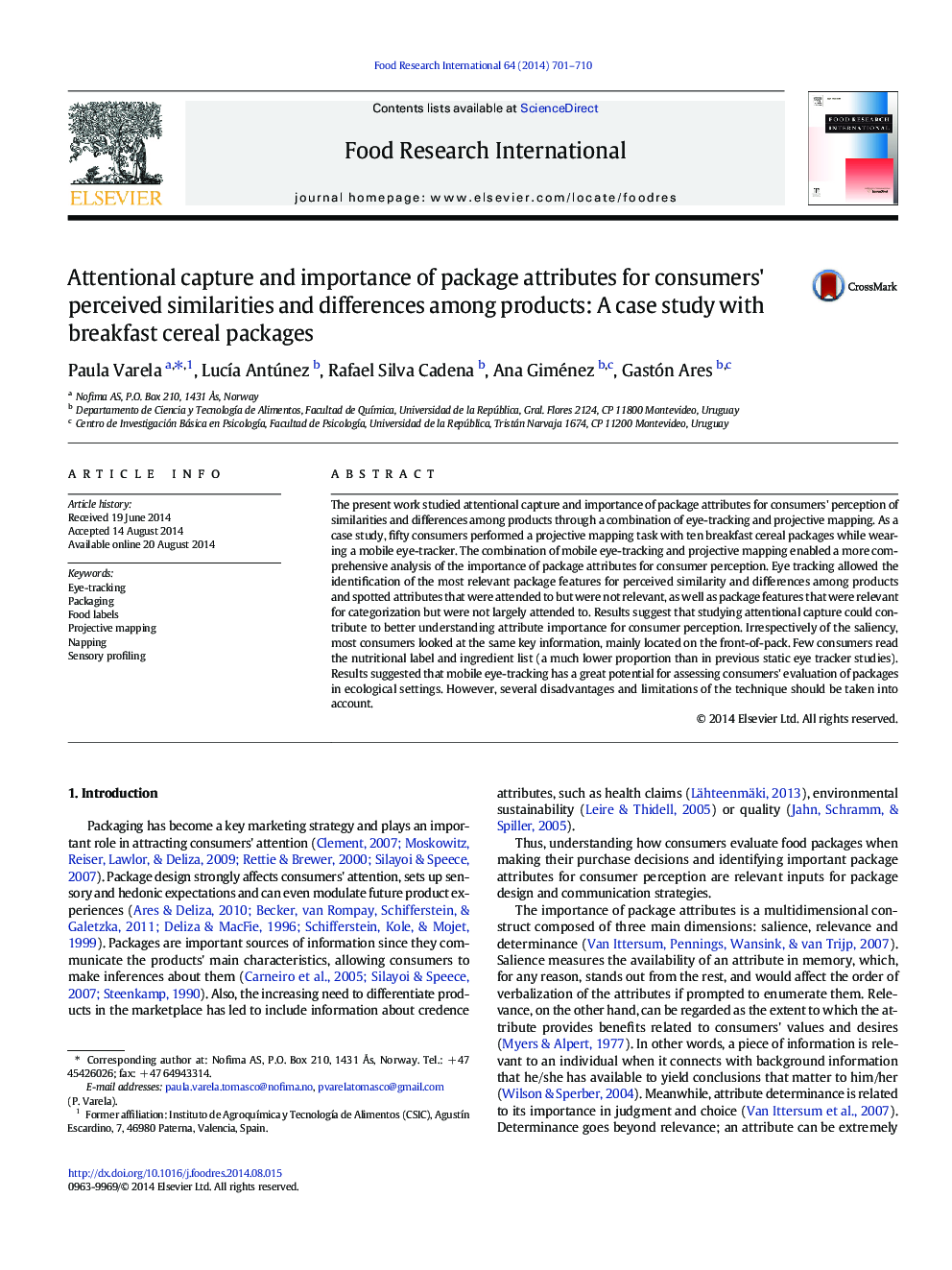| Article ID | Journal | Published Year | Pages | File Type |
|---|---|---|---|---|
| 6396737 | Food Research International | 2014 | 10 Pages |
â¢Attentional capture was recorded during a projective mapping taskâ¢Mobile eye-tracking allowed understanding package perception in a realistic wayâ¢Product name and brand were the most relevant features for consumer visual processingâ¢Nutritional information and health claims were attended to by few consumersâ¢Attention to features and categorization were not necessarily related
The present work studied attentional capture and importance of package attributes for consumers' perception of similarities and differences among products through a combination of eye-tracking and projective mapping. As a case study, fifty consumers performed a projective mapping task with ten breakfast cereal packages while wearing a mobile eye-tracker. The combination of mobile eye-tracking and projective mapping enabled a more comprehensive analysis of the importance of package attributes for consumer perception. Eye tracking allowed the identification of the most relevant package features for perceived similarity and differences among products and spotted attributes that were attended to but were not relevant, as well as package features that were relevant for categorization but were not largely attended to. Results suggest that studying attentional capture could contribute to better understanding attribute importance for consumer perception. Irrespectively of the saliency, most consumers looked at the same key information, mainly located on the front-of-pack. Few consumers read the nutritional label and ingredient list (a much lower proportion than in previous static eye tracker studies). Results suggested that mobile eye-tracking has a great potential for assessing consumers' evaluation of packages in ecological settings. However, several disadvantages and limitations of the technique should be taken into account.
